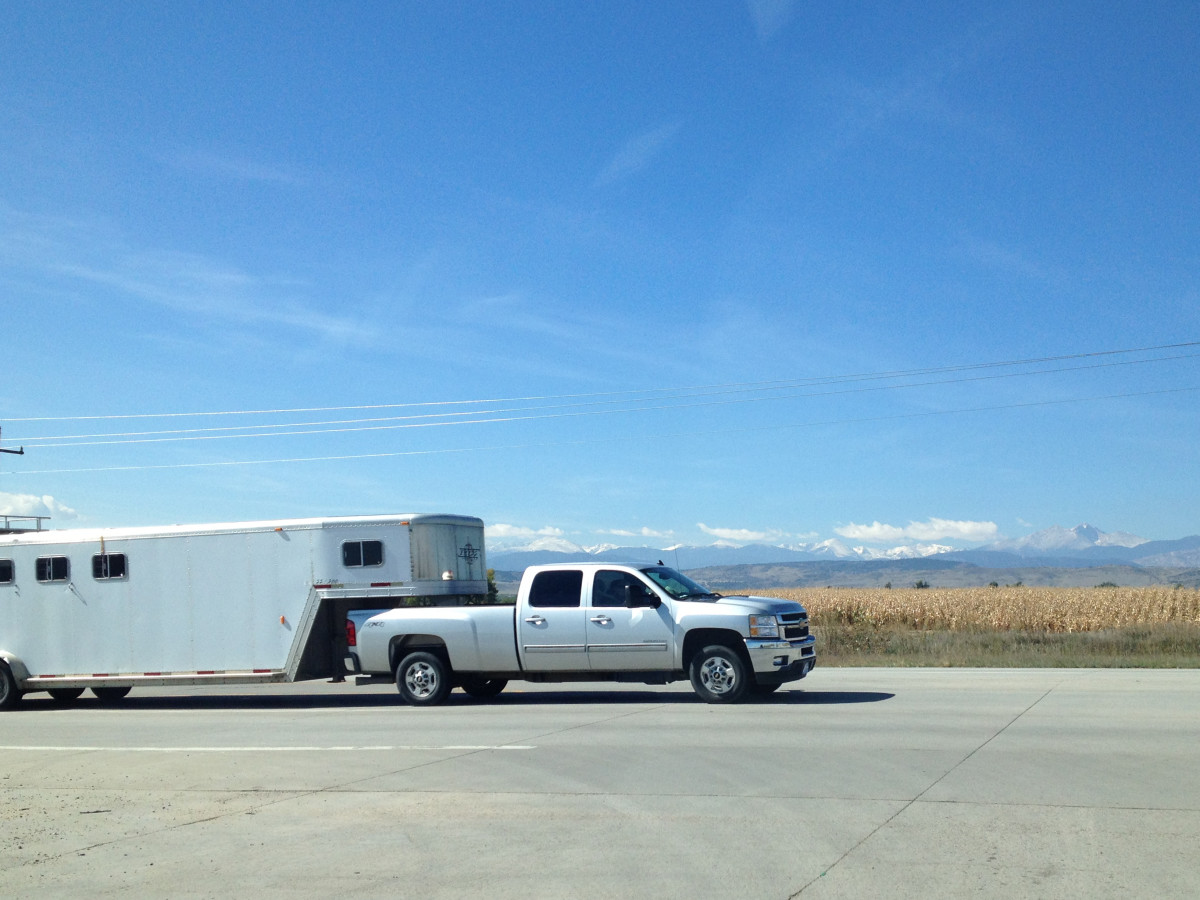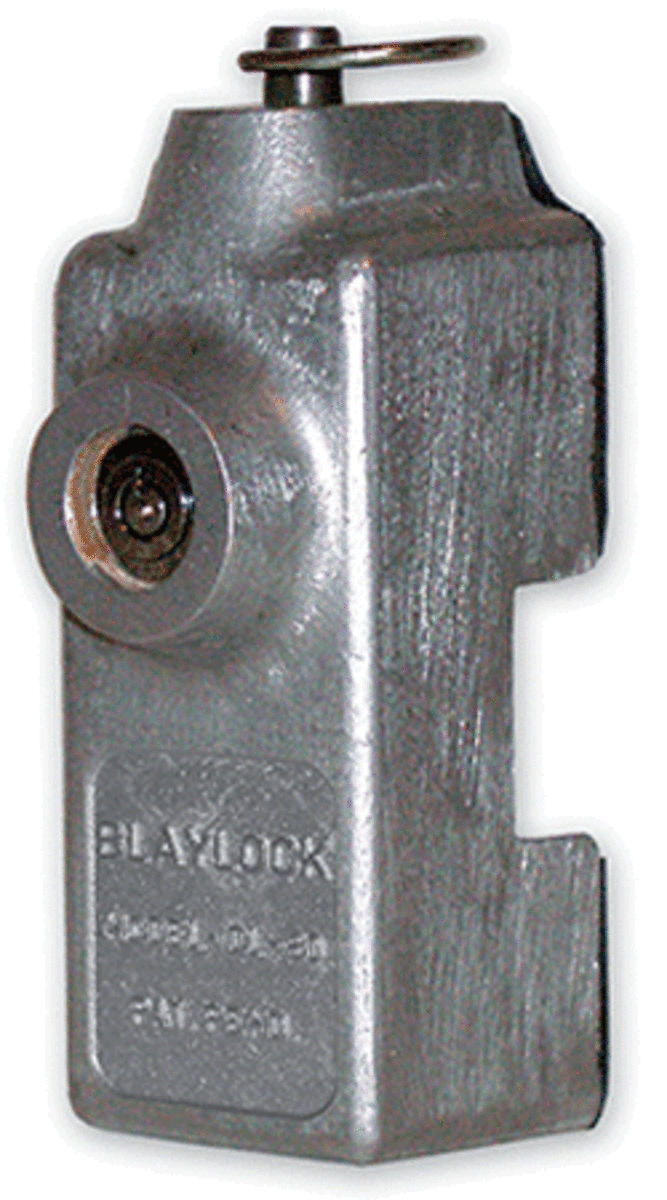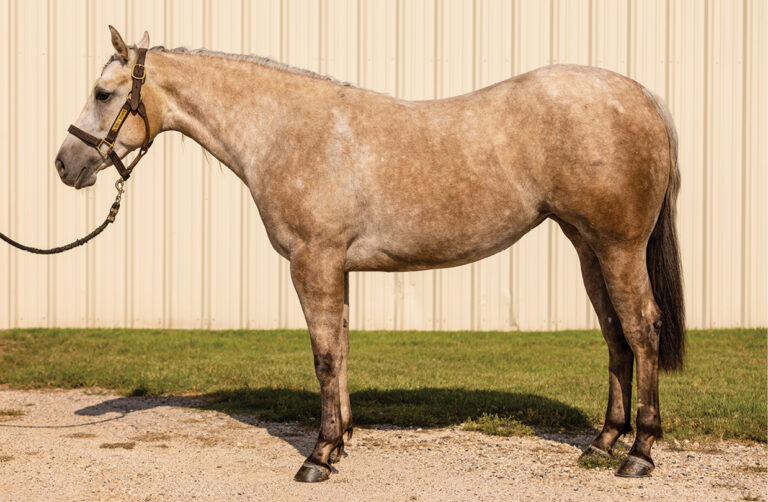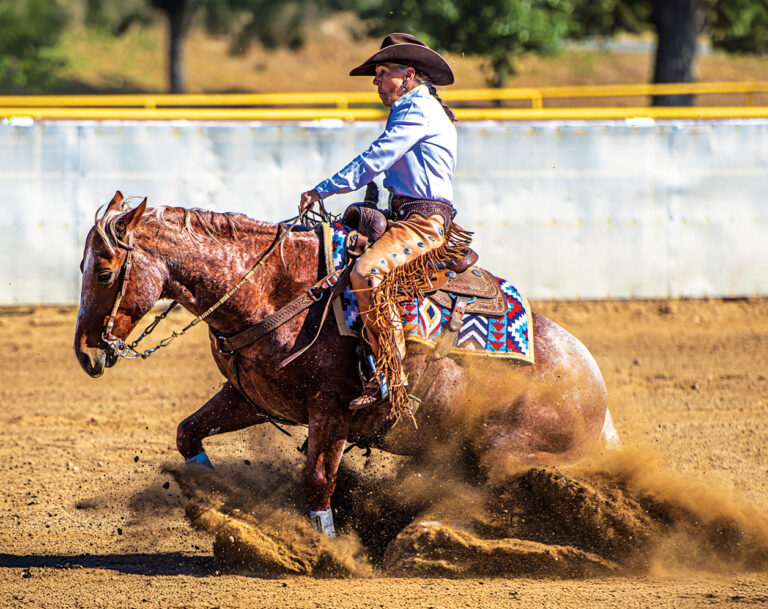
It’s a familiar scenario. You and your horse have been out on the trail for hours, riding up hills, wading in streams, and trotting through gulleys. When the day is nearly over and the two of you are getting tired, you start back to the trailhead. You get to your trailer, untack your horse, load him up, and head home.
Products we feature have been selected by our editorial staff. If you make a purchase using the links included, we may earn a commission. For more information click here.
[READ: Post-Ride Horse Trailering Tips]
Now imagine that same scenario—but when you get back to the trailhead, your trailer is gone! Your truck is still there, but your trailer is nowhere to be found.
If this seems like a horrifying development, it is. Not only are you and your tired and hungry horse stranded, but your valuable trailer and everything in it are in the hands of a thief.
Every year, horse trailers are stolen right off towing vehicles, some from trailheads. In fact, trailheads are a good place for thieves to look for trailers, since they’re often in remote areas with no one around to witness the theft.
The degree of theft risk doesn’t depend on your trailer type or model. Everything from two-horse bumper pulls to four-horse goosenecks with living quarters are routinely stolen. Thieves simply unhitch the trailer and attach it to their own towing vehicle.
Here, we’ll give you the steps to take to deter trailer theft from a trailhead. We’ll also tell you what to do in case the worst should happen and provide you with a handy resource guide.
Step 1: Paint Your Trailer
When thieves size up your trailer to decide whether it’s worth stealing, one of their first considerations is its appearance. Trailers that are easy to identify are less appealing, because they’re easy to spot on the road.
If your trailer is white and generic-looking, it says “steal me.” Think of how many white trailers are sold and used each year. Can you tell one from another at a glance?
“Do anything you can to make your trailer visually standout from the crowd,” says Mark Cole of USRider Equestrian Motor Plan (800/844-1409; www.usrider.org). “Thieves might have a second thought about taking a trailer that’s easily identifiable.”

Fixing the look-alike problem is easy, thanks to companies that provide custom paint jobs tailored to horse trailers. By painting your ranch name/brand/logo, your horse’s name, a rustic scene, or just about anything else on your trailer, you can make it unique and a lot less desirable to steal. Painting it a unique color is another way to make it stand out.
To find a custom paint company in your area, contact a local trailer dealer, and ask for a referral, or contact an auto painting company nearby to find out if they work on horse trailers. (Companies that custom paint trailers also usually paint cars, boats, and other types of vehicles.) Obtain a written estimate before committing to a paint job. The price you pay will depend on the size of your trailer, and the detail of the paint job you’re looking for. Expect to pay at least $1,000, probably more.
Don’t want to paint your trailer, but still want to find a way to make yours stand out? Amazon offers custom vinyl lettering graphics. Customize with your ranch name or place your horse’s name under their respective window.
Bear in mind that you’ll get what you pay for: If the price is low, the quality of paint and workmanship may be sub-par and less than durable. To investigate a company’s quality of work, ask for references to past trailer-owning customers.
If you choose to go with a custom paint job, be prepared to leave your trailer at the shop for at least a few days while the work is being done.
[READ: Horse Trailer Innovations]
If custom work isn’t in your budget, you can do a lot to discourage thieves by adding decals and stickers to the outside of your rig—and you’ll have fun doing it. Breed or discipline-specific decals will ease trailer identification if stolen.
You can also buy larger, elaborate decals that show such images as wilderness scenes, cattle grazing on the plains, or horses galloping through a field. Make sure whatever you choose can’t be easily removed.
Reflective stripes, signs and murals are another option, and serve two purposes: They discourage thieves, while making your trailer safer as it’s tooling down the road. You can add a sign that says “Caution: Horses” on your trailer, as well as reflective pinstripes. These applications will make your trailer more visible at night and help deter thieves.
Try this waterproof reflective tape that’s available in several color/design options.
Step 2: Invest in Security Devices
Another way to make your trailer unattractive to thieves is to use security devices. These include locks, alarms, and tracking devices. Let’s take a look at each one.
– Hitch locks. These work by making it impossible for a thief to attach his or her vehicle to your trailer. The lock fits into your hitch and is secured with the turn of a key. Although some people use a padlock instead of an actual hitch lock, a well-equipped thief can easily cut through a padlock.
Purchase a lock in a few simple clicks on Amazon. The Master Lock Universal Hitch Lock fits several hitch sizes, the VaygWay Wheel Lock wraps securely around your wheel, the SnatchLatch Trailer Alarm that sounds if a door is opened, and the Optimus 2.0 allows you to easily track your trailer from your phone.
“A hitch mount can be stolen even with all the trailer doors locked by simply rolling down the trailer stand, then disconnecting and pushing the trailer back on the dolly wheel,” says The Trail Rider Contributing Editor Bonnie Davis of Two Horse Enterprises (www.twohorseenterprises.com), an online business specializing in horse camping and trail riding.

Hitch locks come in a number of styles to fit different kinds of hitches. High-quality hitch locks are virtually indestructible.
The downside to these locks is that you have to unhitch your trailer from your towing vehicle to put the lock in place. You also have to make sure you don’t lose the key while you’re on the trail. Find a safe, secure place for the key, such as a zippered pocket.
[READ: Horse Trailer Safety Checklist]
– Tongue locks. These allow you to include the trailer chains when securing the hitch. In some situations, thieves have literally dragged the trailer away by the chains if they couldn’t use the hitch.
– Coupler locks. You can usually use these while your trailer is still hitched to your vehicle, depending on the design. They prevent the thief from being able to hook up to the coupler.
– Trailer-wheel locks. You attach these devices on the outside of the tires. When trailer-wheel locks are in place, thieves find it nearly impossible to move the trailer. Well-designed models are easy to install and remove.
The Trail Rider contributors and dedicated Idaho trail riders Kent and Charlene Krone use trailer-wheel locks. “These devices are very effective,” they note. “Anyone who has had a wheel lock put on their car for improper parking can testify to this.”
– Alarms. Trailer alarms are similar to car alarms. Sensors attached to the trailer doors will sound if the door is opened. Some alarms are equipped with sensors that are designed to go off if someone tries to move the trailer or tamper with the locks.
“Trailer alarms emit a piercing noise if your trailer is moved without the alarm being deactivated,” note the Krones. “Most thieves hate attention.”
When shopping for an alarm, choose one that includes an LED system you can place on the outside of the trailer. This will send a message to thieves that the trailer is protected, and may thwart any attempts to take it.
Almost all alarm systems sound a siren and flash the trailer lights when set off, but some go as far as locking the trailer brakes so the trailer can’t be moved. Some also come with paging systems that will notify you if the alarm has gone off. (Unfortunately, these systems don’t usually work if you are more than a mile away.)
– Tracking devices. Although tracking devices don’t necessarily deter theft, they’ll make it easier to find your trailer if it’s stolen. Tracking devices use global positioning system (GPS) technology to tell you where your trailer is located. In most cases, you’ll need to subscribe to a tracking service, which will allow you to locate your trailer online.
Step 3: Insure Your Trailer
You’ve taken steps to deter thieves and avoid having your trailer stolen. Your next step is to have the trailer insured so if the worst happens, you’re covered.
Although your trailer is automatically insured on your towing vehicle’s policy in the event of an accident, theft is another matter. According to Debbie DeTurk, an account executive with Markel Insurance, most auto policies cover auto theft but not trailer theft.
“If you want theft coverage for your trailer, you have to request an addition to your auto policy,” she says.
If your auto insurer doesn’t offer trailer-theft coverage, insure your trailer by a company specializing in such policies.
If you’re on a budget, consider the deductible. If you think it’s unlikely your trailer will be stolen, you may want to go with a higher deductible to save money on premiums. Also, consider insuring your trailer for the replacement value rather than the actual value, if possible. Quality used trailers can be hard to find at reasonable prices, so you might want to be able to purchase a new one if your trailer is stolen.
One of the worst things about having your trailer stolen is losing what’s inside. If your trailer is taken at a trailhead, your equine friend will mostly likely (and thankfully) be with you on the trail. But you may have valuable tack and other equipment inside your trailer, unless you were smart enough to leave it at home.
The good news is that if you have homeowner’s or renter’s insurance, your policy should cover the trailer’s contents. (Verify this coverage with your insurance agent.) Keep careful records, including photos, of all the items you keep inside your trailer when you travel.
[READ: Trailer Safety Do’s & Don’ts]
Step 4: Document Your Trailer
If your trailer is stolen, keeping the right documentation and records in your files will help law-enforcement officials track it down.
Take photos of your trailer from all sides, so you can show police what your trailer looks like and make lost-trailer flyers. Record and keep handy a complete description of your trailer’s model number, along with details on the type of windows, ramp, and interior.
Your trailer’s vehicle identification number (VIN) is an important piece of information; you’ll find it on your trailer-registration card. Keep this card on your person or in your saddlebags when you are on a trail ride, along with a photo of your trailer. That way if your trailer is stolen, you’ll not only prevent thieves from having the registration card, but you’ll also have the necessary information ready to immediately provide to police.
Also, keep photos and descriptions of all the items inside your trailer so you can report these items as stolen.
Step 5: Park Safely
Now that you’ve done everything possible in terms of equipping your trailer to prevent theft, and to ensure you’re compensated should the worst happen, it’s time to think about discouraging thieves at the trailhead by parking with care.
“Whenever possible, park in areas that are open, and have lighting,” says USRider’s Cole. “Park in areas with other horse trailers or that have activity.”
If your destination is a public land (such as a regional, state, or national park, or national forest), you’ll likely leave your trailer in a designated parking lot. These lots are usually quiet, secluded, and seldom used. If possible, park your trailer close to a visitor’s center or ranger station so land-management personnel are likely to notice if someone tries to take it.
“We always try to park near a trailhead with posted rules, because it implies that a government official or a ranger may?pass by,” says The Trail Rider contributor Ben Theyre, who rides extensively in upstate New York and remote areas around the country. “This kind of trailhead gives the impression that?it’s a watched spot. It’s not as interesting to thieves as a place that has no rules posted and is close to a main road for a quick getaway.”
If you park in a remote location, try to back your trailer against a large tree or group of trees, a hill, or any other large object that will make it difficult for thieves to gain access to the trailer doors.
Also, try to park in clear sight of a main highway. Although cars do go by rather quickly, the fact that people can see your trailer from the road can discourage thieves. Even though this may mean that you’ll have to ride a bit farther to get to the main trailhead, it’ll be worth the extra trouble.
And do research before you head out to a remote trailhead to make sure the area is safe. “One of the best methods for preventing trailer theft is to avoid trailheads with a reputation for thievery and vandalism,” say the Krones. “Surprisingly, some trailheads are more prone to illegal activities than others. Call ahead to nearby outfitters, the forest service, and/or other public agencies in the area that would know the history of the trailheadin question.”
Although the possibility of trailer theft is real, don’t let the threat of losing your trailer deter you from going on rides.
“Do your best preventive efforts,” say Kent and Charlene Krone. “Then travel and have fun!”
Are you looking to upgrade your trailer? Go to Equine.com, the premier classifieds site of the Equine Network to search for the perfect trailer for you!




